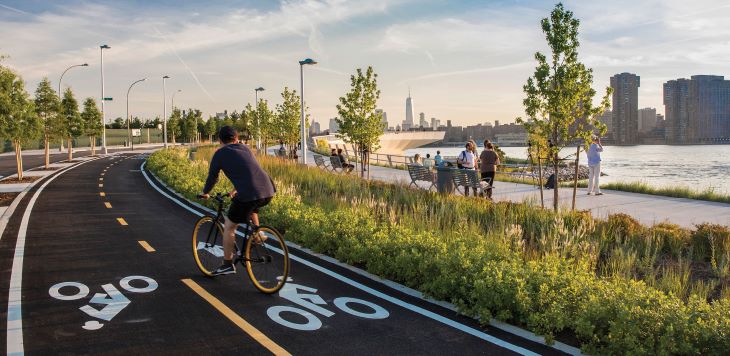╦┐╣¤╩ËãÁ Responds to U.S. DOT on Surface Transportation Priorities
9/5/2025Leave a Comment

2019 ╦┐╣¤╩ËãÁ Honor Award in General Design: Hunter's Point South Waterfront Park Phase II: A New Urban Ecology, Long Island City, New York, United States. SWA/BALSLEY and WEISS/MANFREDI with ARUP. Clients: New York City Economic Development Corporation and New York City Department of Parks and Recreation. Photo Credit: ┬®Lloyd/SWA
Recently, ╦┐╣¤╩ËãÁ submitted formal to the U.S. Department of Transportation (U.S. DOT) in response to its request for information on surface transportation in its public notice, Advancing a Surface Transportation Proposal that Focuses on AmericaÔÇÖs Most Fundamental Needs.
╦┐╣¤╩ËãÁÔÇÖs recommendations emphasize the importance of designing transportation systems that are safe, efficient, resilient, and accessible for all users. The comments reflect ╦┐╣¤╩ËãÁÔÇÖs commitment to advancing federal transportation policies that enhance public health, foster economic growth, and create sustainable, people-centered communities.╠²
╠²
╦┐╣¤╩ËãÁ urges U.S. DOT and Congress to work together on a final surface transportation reauthorization measure that will
- Enhance transportation safety by
- Integrating nature-based solutions into transportation projects to reduce flooding, prevent erosion, and make infrastructure more resilient.
- Supporting the Complete Streets Act of 2025, ensuring roads accommodate pedestrians, bicyclists, public transit users, and people of all abilities.
- Expanding funding for the Safe Streets and Roads for All grant program to help communities design safer, more accessible corridors.╠² ╠² ╠²
- Promote economic growth through expanded capacity and mobility, and congestion relief by
- Increasing investment in the Transportation Alternatives (TA) program to provide cost-effective active transportation options like biking and walking.
- Strengthening the Recreational Trails Program to support more than 30,000 trail projects nationwide.
- Bolstering the Safe Routes to Schools program to improve walking and biking infrastructure and ensure safer commutes for students.╠² ╠² ╠²
- Strengthen partnerships with stakeholders by
- Encouraging closer collaboration between DOT and the National Park Service (NPS) by increasing dedicated funding to maintain and improve park roads, bridges, trails, and transit systems.
- Promoting coordination with federal, state, and local partners to ensure transportation systems serve community needs.╠² ╠² ╠²
Landscape architects play a vital role in designing multimodal transportation systems that balance mobility, safety, and environmental stewardship. By submitting these comments, ╦┐╣¤╩ËãÁ reinforces its commitment to advancing federal policies that create healthier, more connected, and more resilient communities.


